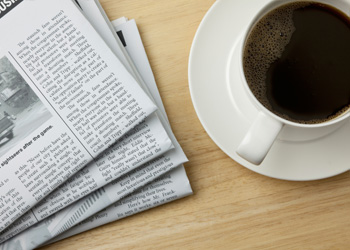
Retail is a cyclical process that is best viewed on a monthly basis as part of a season.
This cycle will help you to see the important role merchandise planning plays in a successful retail business. We group the process into five key objectives or steps that occur each month in a cyclical patter:
- Data from your POS System
- Your Merchandise Plan
- Assortment Plan
- Marketplace Orders
- Sales
Securing the right merchandise and getting it on the shelves consumes four of the five parts of the retail cycle. Sure, sales are important but every part of the cycle is important. Too often the sales segment gets most of the attention while paying more attention to better buying would boost sales and profits even more. A key management responsibility is to optimize the function and performance of all parts of the cycle. Like a weak link in a chain, any part of the retail cycle that is not functioning reduces the strength of the chain.
The Merchandise Plan
Retail today is not easy. You fight daily with competitors, vendors, employees and maybe even the bank! This whitepaper is about managing inventory. You pay over half of every dollar you make to vendors to buy merchandise. With that much riding on your decisions, you cannot afford excess markdowns, stock-outs or mistakes. That is why Management One® exists. The Management One® team members are proud of their process and the solutions they bring to clients. That is why we are willing to share these ingredients of how our planning has generated success for our client base. Our passion and our commitment are to drive our clients' businesses profitably and create growth in their cash flow. Many
retailers are able to recognize and buy great merchandise. They are also great sellers due to their knowledge of the merchandise and their ability to make great relationships with customers. So those facets of the business are familiar to retailers – but a successful business takes more than that.
Your store is really made up of many micro-stores. We call each micro-store a classification (some call them categories). For example, a women's boutique might have a micro-business called “tops" and another called “dresses". Although they are both sold by the same store and maybe even bought by the same buyer, they can have a different demand, markup, strategy and inventory level. Because this store always carries both tops and dresses, a rich history data stream is available so that forecasting in the future is possible. Classifications are used for merchandise planning because they are the right level of detail without becoming so detailed that the output becomes meaningless. Putting together the correct classification structure for each situation and each retailer is a skill Management One® has developed and honed over years.
Making Decisions in Your Business
Retail success is about making a lot of decisions correctly. The better your buying decisions, the better your sales, market share and cash flow. Making the right decisions depends in great part on having the right information available upon which the decisions can be based, analyzing that information correctly and then analyzing how to achieve the results desired. True, that is a mouthful but it is important. Your POS system will gather a lot of data. Every sale, every customer, every order and every markdown are tracked and there is a lot of information that you can get from the POS system. Finding the information in all that data is not easy. It is like the three bears where there is either too much data, too little data or the situation we seek where the amount of data is just right. Over years of merchandise planning, we have learned the right amount of data needed to gather to make the right buying decisions.
We gather that data by classification so we can provide information on how to buy for each of those micro-businessesyou must manage. Remember that one reason we use classifications is because they are consistent over time. For the same reason, we gather the information we plan on in dollars (or other monetary units in other countries). We have
found that demand tracks by money the market has to spend rather than by how many units they will buy
Remember all those math classes you hated in school? Did you get far enough to hate statistics too? Well we learned to love it and use a proprietary software package that has sophisticated mathematical models and statistical trending tools to turn that data from the POS system into a forecast of demand or sales for each classification. Our models are so good we know how much will sell in each classification every month for the next 12 months! Our ability to predict the future demand is a secret to our success
Every merchandise planning process starts with an estimate of sales in the future. Not every merchandise planning process starts with the right sales forecast. If you do not start with the right sales forecast – STOP – Do not pass GO – Do not collect profits for the season. A merchandise plan with the wrong sales forecast leads to more mistakes than answers
Stock to Sales
So now, just when you think you have the secret to great merchandise planning understood, another challenge comes flying at you. What? There's more? You know how much you will sell but unless you are living in retail heaven, you will not sell out to the piece. (And if you do, you probably did not buy enough and many customers walked out the door without carrying a bag with your logo on it.) That means you need selection. It means you need sizes. It means you need back stock– but how much?
Knowing how much inventory is needed to reach the sales target in each classification is one of the most closely guarded secrets of merchandise planning organizations. In our case, we have been not only doing plans but building a database and studying stores, markets, industries and the specifics since 1990. Every classification has a different stock to sales ratio that is correct. That ratio changes every month during a season. The right ratio is different every season. It depends on where the store is and obviously what type of store it is. It will be different in a mall vs. a stand-alone vs. a downtown area. There are so many variables and such a large database to mine, that once again we had to go back to that hated mathematical process to find the stock to sales ratio that is just right for each individual situatio
In addition to our great mathematical process, we have a team of professional merchandise planners who review each classification each month to make adjustments. Why adjust, you ask? Because you know things that we do not and a great plan needs your input! Did you say they are tearing up the roads in front of the store next month? Our experts tweak the plan. Did you say your big promotion on denim is launching next month? Another tweak
Get the idea? We need to work with the stores to get it right and we do just that. Every client has his own affiliate who works with him in this customized fashion. These affiliates are retail experts who are certified by Management One® in relaying the pertinent information to our expert planners. They are able to read a detailed merchandise plan in a single leap (although probably over several hours and certainly not faster than a speeding bullet) and boil it down into the right action plan for the client. These experts are the liaison between a great retailer and a great merchandise plan!
Other information is needed before a great merchandise picker is ready to prepare an assortment plan and go to market to buy. The value of the beginning inventory each month is almost never what it seems. Does it contain merchandise that is getting a little dated? Are there some items that have broken sizes? Are there items that are screaming “sidewalk sale"? In order to determine how much to buy, we need to know how much you have at current retail value.
Another source of merchandise that is not in the OTB is what you have already ordered. Your POS system should maintain a total of merchandise that will arrive during the coming months (by month) for each classification.
Once all those questions are answered, any OTB spreadsheet can do the math to arrive at an OTB that will help you buy the right amounts of merchandise in each classification and bring them into the store at the right time.
Benefits of Merchandise Planning
Imagine slashing the amount of markdowns you need to take at the end of the season! What if you had the selection to satisfy more customers? What if you replaced the panic with a knowing smile that indicates you have confidence in the decisions you made at market when all the goods you bought start arriving ?
I bet you feel better already but there is more. A great merchandise plan contains a great sales forecast. When your sales staff is presented with a goal that is a stretch but achievable, you can sit back and watch the cash flow in and the merchandise stream out. It is not unusual for our clients to boost sales at the same time they cut inventory which leave with them with more cash.
There are many more benefits for almost any retail business. How will your marketing affect sales and inventory? Your merchandise plan will answer that. Is there room to raise initial mark-up? Should the mark-up be cut for a classification to drive more sales? These questions and many more are answered by a great merchandise plan. Your accountant will love the fact that a great merchandise plan will tie back to the financials. Finally the entire business begins to make sense.
Another set of benefits accrue to the owner. Sleep better knowing decisions were made based on the best information and forecasting available. Better decisions means more cash in your account – a vacation – a raise – send the kids to college – cash you can use how you want.
How Often Should You Plan?
The simple answer is every month.
Sometimes clients get frustrated when the plan changes from month to month. That is understandable as it can seem like they are trying to hit a moving target. Unfortunately, retail is a moving target and forecasting and planning in that environment is tricky. We always try to provide the best plan possible and that means it should be based on the latest and best data available. That is why we re-issue the plan every month. If we can grow a classification, we want to do that in lieu of keeping the plan the same and not planning that month. John Maynard Keynes, a great economist, said, “When the facts change, I change my mind." Every retailer should buy into that same philosophy.
Things change in the environment too. The economy heats up or cools off; the stock market soars or drops; consumer confidence changes; an election or event in the news has people preoccupied; or even road construction outside the store can require changes. Retail is a very dynamic system and a good forecast must take into account all of the most pertinent and most recent data and input to come up with a forecast that can be relied upon.
Getting the right prediction is a very important part of what we do. Hundreds of retailers around the world count on those predictions to ultimately feed their family, send children to school, pay the rent and retire. The more accurate the prediction, the better the buy will be and the greater the profit from that buy will be. Maximizing the profit a retailer can glean from his/ her business is our goal.
Buyers are Important for Success
“Data Driven predictions can succeed and they can fail. It is when we deny our role in the process that the odds of failure rise. Before we demand more of our data, we need to demand more of ourselves." – The Signal and the Noise by Nate Silver
A great merchandise plan is useless in the hands of a poor buyer. Over and over we find that retailers who buy according to the plan are much more successful than buyers who only use the plan as rough guide or worse, those who do not buy to a quality merchandise plan at all.
Of course the best buyers are the ones who can find the most interesting merchandise to fulfill the OTB budget. But over-buying the demand levels with even the most interesting merchandise means markdowns and cash flow problems are around the corner
We tell prospective clients that success depends as much on them as on us. That is why our affiliates operate as part of the client's team. Only by changing how you go about buying and running the business according to the coordinated merchandise plan can your business improve. Our clients certainly demand a lot of us. We demand a lot of them too. Is it more work? Not necessarily but the work is different. When you work smarter not harder, your success is unimaginable.
Summary − Making Better Merchandise Decisions
“We think we want information when we really want knowledge. The signal is the truth. The noise is what distracts us from the truth." – The Signal and the Noise by Nate Silver
Making good retail decisions is about more than just gathering lots of data. It requires talent to tease trends and insight from that haystack of data.
Hindsight is 20/20. It is much easier to pick out the trend when you can work backward from the result. That is too late. Once you see that dresses are flying off the shelf, the competition is making a killing in dresses! You must know before the season that dresses will be a hot classification and include that in your merchandise plan. Our advantage is the thousands of classifications we plan each month. We have bellwether stores to help our planners ID trends.
We bring our clients many insights through the merchandise plan that they cannot see within the four walls of their store. A great merchandise plan does that.
Conclusion
By now I hope you have a much better appreciation for the importance of a merchandise plan for retail success and how various elements of putting the plan together affect the outcome and value of the plan. We have been discussing a simple plan and there are many other important parts to a truly professional pla.
Merchandise planning is not a trivial process. The best retailers would not go to the trouble or expense if it were not critical to their success. The best marketing tool is an accurate merchandise plan. The best motivational tool for managers to keep the sales staff on track is an accurate merchandise plan. The best tool for buyers to know how much to buy, when to land the goods and how to move them out during the season is an accurate merchandise plan. The fact that we have a great data base, 23 years of ongoing experience, objectivity and great bellwether stores, are all attributes we possess to deliver a highly effective plan. We know what classifications are important and that if you are not performing well in a specific classification, there is an opportunity to solve that.
This series has been presented by Management One®. We have been providing professional and accurate merchandise planning since 1990 for specialty retailers. Our view is that specialty retail is what makes a community unique. Many specialty retailers are great pickers and superb sellers but they do not have the patience, skills or desire to spend the time each month to prepare an accurate merchandise plan. They know they must have one so they outsource the task to one of our many affiliates around the world. If you would like more information on what an accurate merchandise plan could do for your business, please contact us.
Finding out more will not cost a cent and carries no risk. The upside potential could be enormous.
- Article by Evan Wise, Management One®





